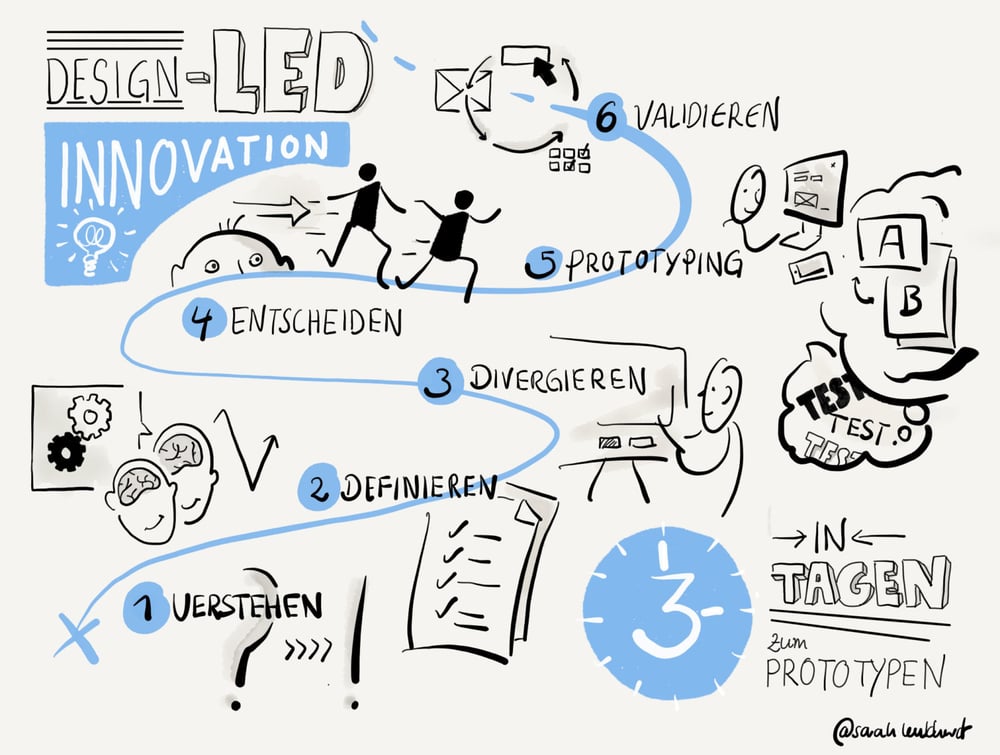In times of digitization, many companies face the challenge of reinventing their business model − with innovative ideas, working methods and processes. This situation requires an open innovation culture and methods that help turn inventions into innovations. Companies must learn to identify problems that can be solved with creative ideas. One method that supports this process is design-led innovation.
With design-led innovation we take you from the idea to the prototype of your business app in just three days. In the context of our Design-Led Innovation Package for Business Apps, we work with you to develop ideas that take your business forward.
The basis for this package offer is an already identified, specific challenge of the customer, which requires a solution. To reach this point, a design thinking workshop is often held beforehand.
In several design sprints we jointly analyse challenges, develop ideas and create a prototype based on them.
Understand
Define
Diverge
Decide
Prototype
Validate
“Design is not just what it looks like and feels like. Design is how it works.”
Steve Jobs, co-founder and former CEO of Apple
For the implementation of design-led innovation, participants from different areas and roles of the company are brought together. Optionally, the design sprint can be carried out in our innovation room in a creative and relaxed working atmosphere.

In the first step (understand) different points of view and the technical implementation are discussed in order to be able to define a possible solution in the next step. We usually start by creating so-called personas, on the basis of which we outline a first use case and consider possible solutions from the end user’s point of view.
In the next step the participants define a concrete solution. The creation of so-called personas helps here, on the basis of which we outline an initial use case and consider suitable solutions from the end user’s perspective. Often several user groups work with an application, so that it needs different functionalities. Accordingly, several personas have to be defined.
Diverging means that initial ideas are critically scrutinized and new approaches are developed at the same time. For this purpose, there are a variety of methods such as “Crazy 8 in 5” that can be used. Each person outlines 8 possible UI solutions in 5 minutes. The purpose of this activity is to generate many possibilities to solve the challenge – regardless of whether they are realistic or not.
In step 4 – Decide – different variants are discussed in order to arrive at the ultimately best solution. It is important to keep the user in focus throughout the whole process and to coordinate the different solution models with the personae created. Finally, the participants decide on a design.
The solution found can now be implemented within the scope of a LoFi prototype. The advantage in creating such a prototype is that first ideas can be tested in a very short time and problems can be detected early. The sketches created are then implemented by our UX designers in a first interactive prototype that can be tested on end users. The result: a clickable prototype.
The final step is the validation in the company with the different business units and interest groups. End users test the prototype by means of individual guiding questions. The technical implementation is also checked again. If the validation is a success, the solution can go live.
Simply fill out the form and send it in. We will contact you as soon as possible.